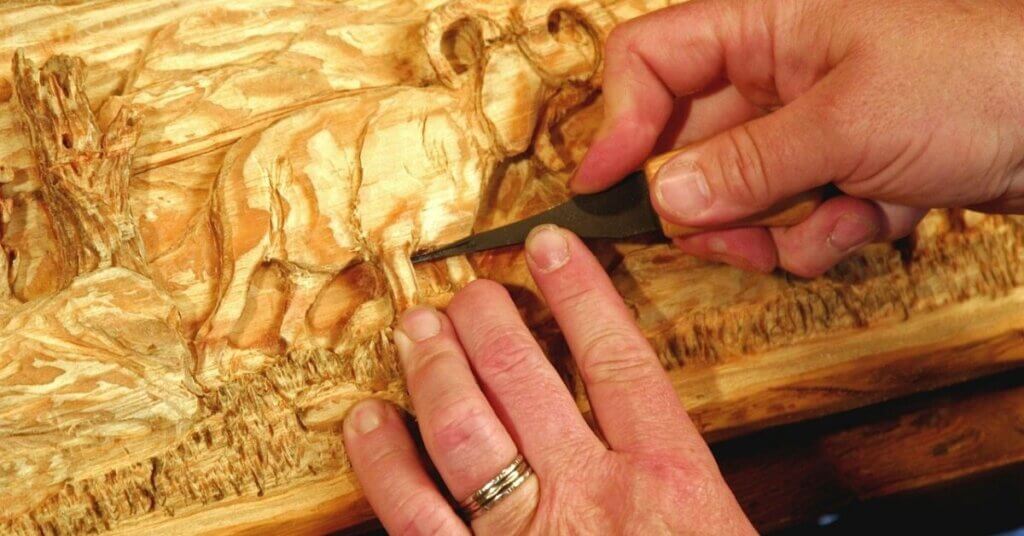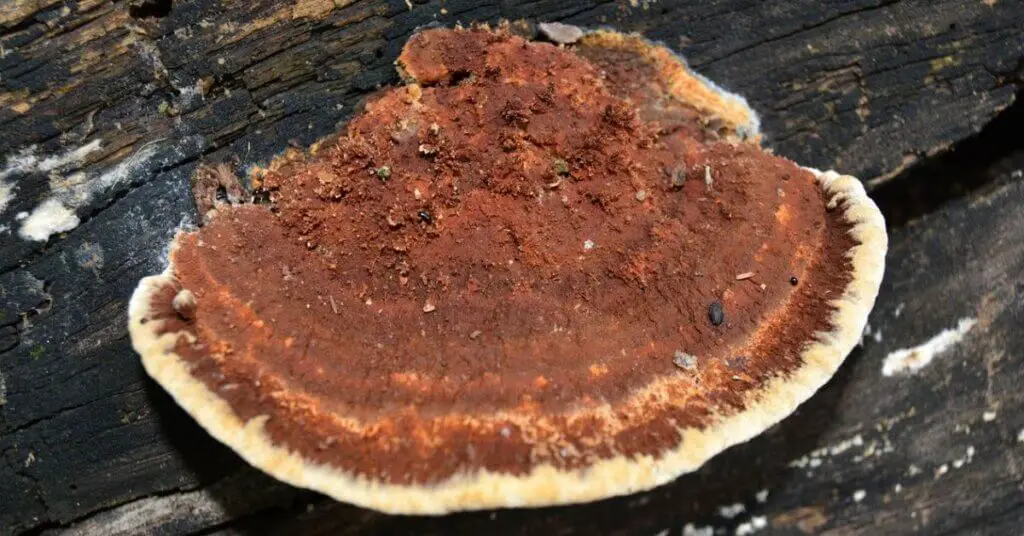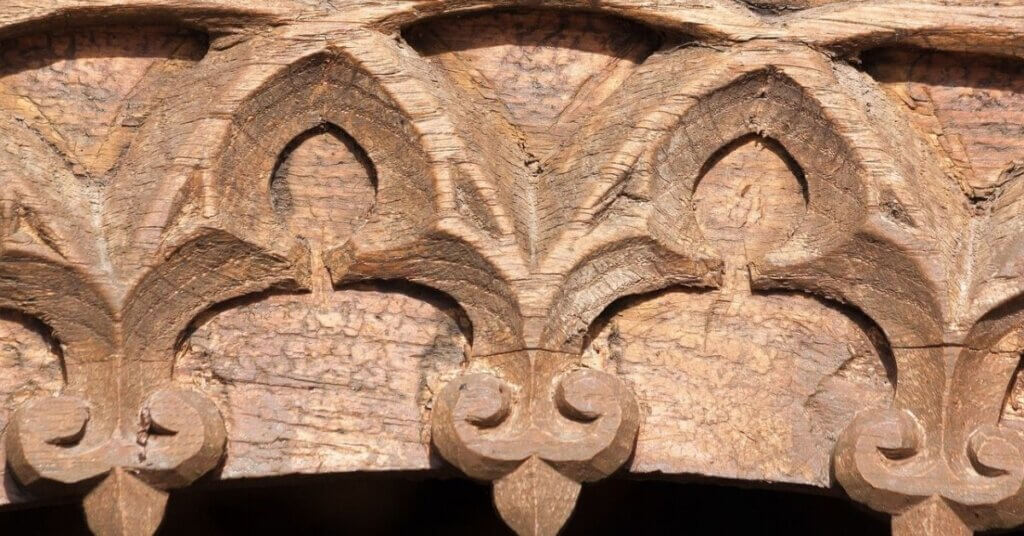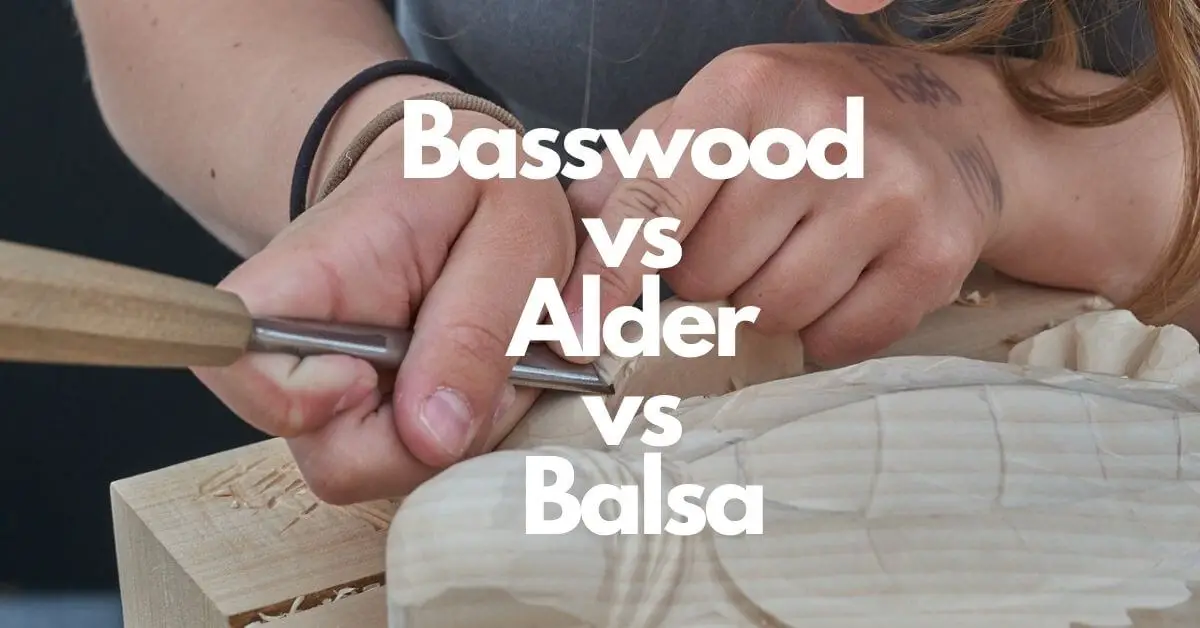Basswood(Tilia) is a genus of about 30 species of trees or bushes and is native to Eastern North America. It is commonly known as Linden for European species and Basswood for American species. Some species names of basswood are American Basswood (Tilia americana), Carolina Basswood (Tilia Caroliniana), Silver Linden (Tilia tomentosa), White Basswood (Tilia americana var. Heterophylla), and so on.
It is light, soft hardwood, and widely used for carving. Because it has great softness and workability.
Alder(Alnus) is the common name of a genus of flowering plants. There are more than 35 species in the alder family, all have almost similarities. It is native to many areas of the northern hemisphere. Some famous species of Alder are Black Alder (Alnus glutinosa), Green Alder (Alnus Viridis), Gray Alder (Alnus incana), Hazel Alder (Alnus serrulata), and many more.
Alder lumber is used for furniture, cabinetry, and turned products. Because it has a smooth and straight grain, the wood gives an amazing and uniform appearance.
Balsa Wood(Ochroma Pyramidale) is a member of the genus Ochroma and is native to America. It is the most famous and most demanding wood species in America. Because it is used for many purposes.
Let’s know about them in detail and find out the difference between Basswood, Alder, and Balsa.
| # | Basswood | Alder | Balsa |
| Scientific Name | Tilia | Alnus | Ochroma Pyramidale |
| Tree size | 20-37 meters | 15-30 meters | 18-28 meters |
| Color / Appearance | white to light brown color | Light yellow to reddish | pale reddish-brown color to white to off-white |
| Workability | Easy to work, | Great workability | very easy to work |
| Uses | Carvings, lumber, musical instruments (electric guitar bodies), veneer, etc. | Veneer, plywood, furniture, cabinetry, millwork, pallets, musical instruments, etc. | Buoys, rafts, surfboards, model airplanes, musical instruments, packing/transport cases, etc. |
| Availability | Widely available | Easily available | Overall |
Uses

Basswood
Basswood is a light, soft Wood that makes carving easier. Easily and fast production is possible with lightweight wood. Apart from carving, it is also used for musical instruments, wood pulp, veneer, plywood, window shutters, and blinds.
Basswood is a soft hardwood. Basswood is rated as being non-durable in regard to heartwood decay. So it is not suitable for any exterior applications. It starts to rot in moisture and bad weather.
Alder Uses
Like basswood, alder wood is soft hardwood, and alder is used in making furniture, cabinets, and other woodworking products. Some alder species are edible and maybe a rich source of protein.
Alder is not used for any kind of moisture exterior application, it is better for interior use. It is sandable wood and it has natural warm honey color without wood polish.
Balsa Uses
Balsa wood is very soft and light wood. Its main use is for module building, bridge tests, and model aircraft. Balsa wood has good strength and bending properties.
Balsa wood is the preferred wood species of boat makers due to its lightweight nature. It was used in world war 2 to make boats. So that soldiers could easily take from one place to another.
Balsa wood is a great Insulator. It is used in damp walls and ceilings. Also, it is a better warmer which keeps the house warm in cold weather.
Balsa wood is used in furniture as it is stable for interior applications. Although it is not very durable and stiff. Still, with regular maintenance, it can be used for a long time.
Rot Resistance

Basswood, alder, and balsa do not have rot resistance properties. Also, they are not durable. Balsa wood is more susceptible to insect attacks.
However, It needs regular maintenance if you want to use it for a long time. Like coating the paint and polish. So that its open pores are closed and do not absorb moisture and dust. Another thing: Keep furniture away from damp places.
You can use treated wood to get better durability. The properties of wood are enhanced through a special(heat and pressure) process. In this, the natural properties of the wood are not affected.
Basswood vs Alder vs Balsa | Which wood is waterproof?
Balsa wood is used to make boats and surfboards. However, they are completely sealed by paint and polish. So that moisture does not stay on the wood surface for a long time. Otherwise, this will damage the wood.
No wood or anything made of wood is 100% waterproof. Still some hardwoods which have high density and close grain, that species perform well in moisture.
Basswood vs Alder vs Balsa | workability

Basswood, Alder, and Balsa, all three are soft and lightweight. So that all these woods have great workability properties. Due to the knotty and irregular grain pattern, sometimes it can be difficult to work, but it is rare. Fuzzy surfaces can be a problem when using a dull cutter in Balsa wood.
Work can be done easily by hand and machine tools. Pre-drilling is not required to apply nails and screws. This saves a lot of time for the carpenter and the owner.
Being very soft, nail and screw holding properties are not good. So to hold two wooden blocks. You have to rely on joints and glue.
Basswood Pros and Cons
| sr. | Basswood Pros | Basswood Cons |
| 1. | Easy to work with hand and machine tools. | Poor Stream bending and nail holding characteristics. |
| 2. | Light and fairly soft hardwood with a fine grain. | low strength properties, So can’t handle heavyweight. |
| 3. | Take stains and paint well. | Not Rated for decay resistance. |
| 4. | Basswood is inexpensive wood. | Not suitable for external applications. |
| 5. | Easily available in small wood stores. | The growth rate is low. So it’s not as widely available as balsa wood. |
Alder Pros and Cons
| Sr. | Alder wood Pros | Alder wood Cons |
| 1. | Its natural dark color looks attractive. | It is not durable for exterior applications. |
| 2. | Alder is inexpensive. | It absorbs moisture very fast. So that your furniture can be affected. |
| 3. | Light in weight and workability is great. | There are many species of alder. which are difficult to identify. |
| 4. | Alder is Sustainable | Alder is rated non-durable |
| 5. | Widely available in different grades | Reported to cause eye, skin, and respiratory irritation |
Balsa Pros and Cons
| Sr. | Balsa wood Pros | Balsa wood Cons |
| 1. | It is very light and soft. | It is not durable. |
| 2. | The growth rate is fine. So widely available in markets. | Highly flammable. So that it soon burns when exposed to fire. |
| 3. | Balsa is sustainable. | Balsa furniture is not stable and strong. |
| 4. | Straight grain with a medium to coarse texture. | It changes its shape when exposed to moisture for a long time |
| 5. | Balsa is inexpensive. | Susceptible to insect attack. |
Pricing/Availability:
Generally, these are available in more than one grade in the market like A grade, B grade, and so on.
A grade does not have defects and knots or is very rare. Whereas lower grades may have knots and defects. Their price depends on their grade. A grade is always available at a higher price.
All grades of Basswood and Alder are easily available in the market. But High-Quality Balsa (that is, Balsa with a very low density) is rare in the market and its price is also always high.
Where can you buy Basswood, Alder, and Balsa?
Balsa and basswood can be found in your craft store if you need smaller pieces to make any wooden craft or carving. You can get lumber at Hobby Lobby and Homedepot. Sometimes it can be out of stock but most of the time it is not. If you are buying from a local dealer. Always buy from a trusted dealer.

